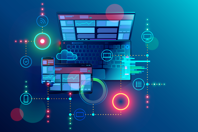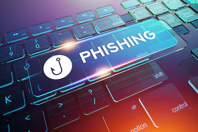SECURITY INSIGHTS FOR VARS AND ISVS
-
It’s important for solutions providers to stay informed of changing trends and the impact they can have on your client – both if they adopt them and if they don’t. Watch these five tech trends with the power to impact your business and your clients.
-
Why do so many businesses allow unfettered access to their networks? You’d be shocked by how often it happens. The truth is: your employees don’t need unrestricted access to all parts of our business. This is why the Principle of Least Privilege (POLP) is one of the most important, if overlooked, aspects of a data security plan.
-
In my previous blog post, Why Healthcare Organizations are Easy Targets for Cybercrime, I discussed various reasons that hospitals and healthcare organizations make desirable and lucrative targets for hackers. In this second installment, I’ll go over how criminals are attacking these organizations, the methods they use, and also what needs to be done to begin to address this dangerous threat.
-
Certain types of cybercrime targets always make headlines. In this two-part series, we’ll get into a pretty serious one: your health, and why hackers are targeting the healthcare industry for profit.
-
When you think of a hacker, do you envision an anti-social, young, hoodie- wearing man in a dark basement? Popularized by Hollywood and mainstream media, this is the image many of us see, although it’s not entirely accurate. These stereotypes teach us to think of hackers only as nefarious individuals who will stop at nothing to wreak unstoppable havoc. However, the reality is that hacking is a variable, diverse, and highly indvidualized practice, and not all hackers are cybercriminals. In fact, some hackers can even help strengthen your digital defenses!
-
Hackers typically fall into three distinct categories: black hat, white hat, and grey hat. Black hats are hackers who violate computer security with malicious intent, while white hats test existing internet infrastructures to find loopholes or bugs in the system, typically to improve security. Grey hats fall somewhere in between, often breaking into systems illegally but without malicious intent. There are also many subtypes of black, white, and grey hat hackers with various means and motives, from the novice script kiddie to the nation-state terrorist.
-
One of the most notable findings to come from the Webroot 2020 Threat Report was the significant rise in the number of active phishing sites over 2019—a 640% rise, to be exact. This reflects a year-over-year rise in active phishing sites, but it’s important to keep this (dangerous) threat in context.
-
Over the last several years, the use of artificial intelligence (AI) and machine learning (ML) has maintained consistent growth among businesses. During our 2017 survey of IT decision makers in the United States and Japan, we discovered that approximately 74% of businesses in both regions were already using some form of AI or ML to protect their organizations from cyber threats. When we checked in with both regions at the end of 2018, 73% of respondents we surveyed reported they planned to use even more AI/ML tools in the following year. For this report, we surveyed 800 IT professionals with cybersecurity decision- making power across the US, UK, Japan, and Australia/New Zealand regions at the end of 2019, and discovered that 96% of respondents now use AI/ML tools in their cybersecurity programs.
-
“One of the things about working in internet technology is nothing lasts forever… [Students] come to me and they say, ‘I want to do something that has an impact 20, 50, or 100 years from now.’ I say well maybe you should compose music because none of this technology stuff is going to be around that long. It all gets replaced.” -Paul Mockapetris, co-inventor of the domain name system (DNS)
-
Secure remote access and the cloud are the new normal for today’s business. But traditional access solutions are poor choices when remote users “live” in AWS, Office 365, and the rest of the cloud. This eBook will explain the pros and cons of the three ways remote users can securely access the cloud - direct access, legacy VPN, and Secure Access Service Edge (SASE).
-
Ultimately, every business wants to do what they can to best serve their clients and customers. They also want to grow successfully, increase profits, and create lasting relationships for long-term recurring revenue. But in today’s cyber- climate, if you don’t have a good security setup, the chances you’ll get breached get higher every day. That means all the customers who trust you will have their confidence shaken—no matter how good your products or services are.
-
As each year winds down, we tend to look at the coming new year with hope and determination. We will get on that treadmill, we will eat less cake, and we will adopt sound security principals. However, the reality is, we change very little from year to year. That is until something happens to shock our systems.
-
Managed IT services are expected to grow at a CAGR (compound annual growth rate) well into the double digits.
-
Various download sites have been plastering ads all over their pages for years, some of which are just for other types of software and some of them are for services. However, a new trend among these ads has emerged, adding an extra download button where there should not be one. By Adam Kujawa, malware intelligence analyst, Malwarebytes






